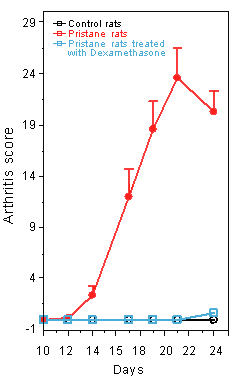Over 90% of adults and children living with and seeking treatment for ADHD manifest cognitive dysfunction, particularly impairments in attention, working memory and executive function which provides support for a cognitive rather than psychomotor basis of ADHD pathology.
NEUROFIT proposes a scopolamine-induced cognitive deficit to test the ability of your compounds to reverse these symptoms. see more ...

There are several lines of evidence indicating that cholinergic mechanisms are responsible for the cognitive deficit associated with ADHD.
NEUROFIT offers an animal model of cognitive deficit in which ADHD medication drugs (methylphenidate, amphetamine and atomoxetine) fully restore cognitive performance.
The T-maze test allows to evaluate cognitive deficit (reduction in the number of alternation) useful as model for screening compounds with cognitive enhancing properties. see more ...































































































